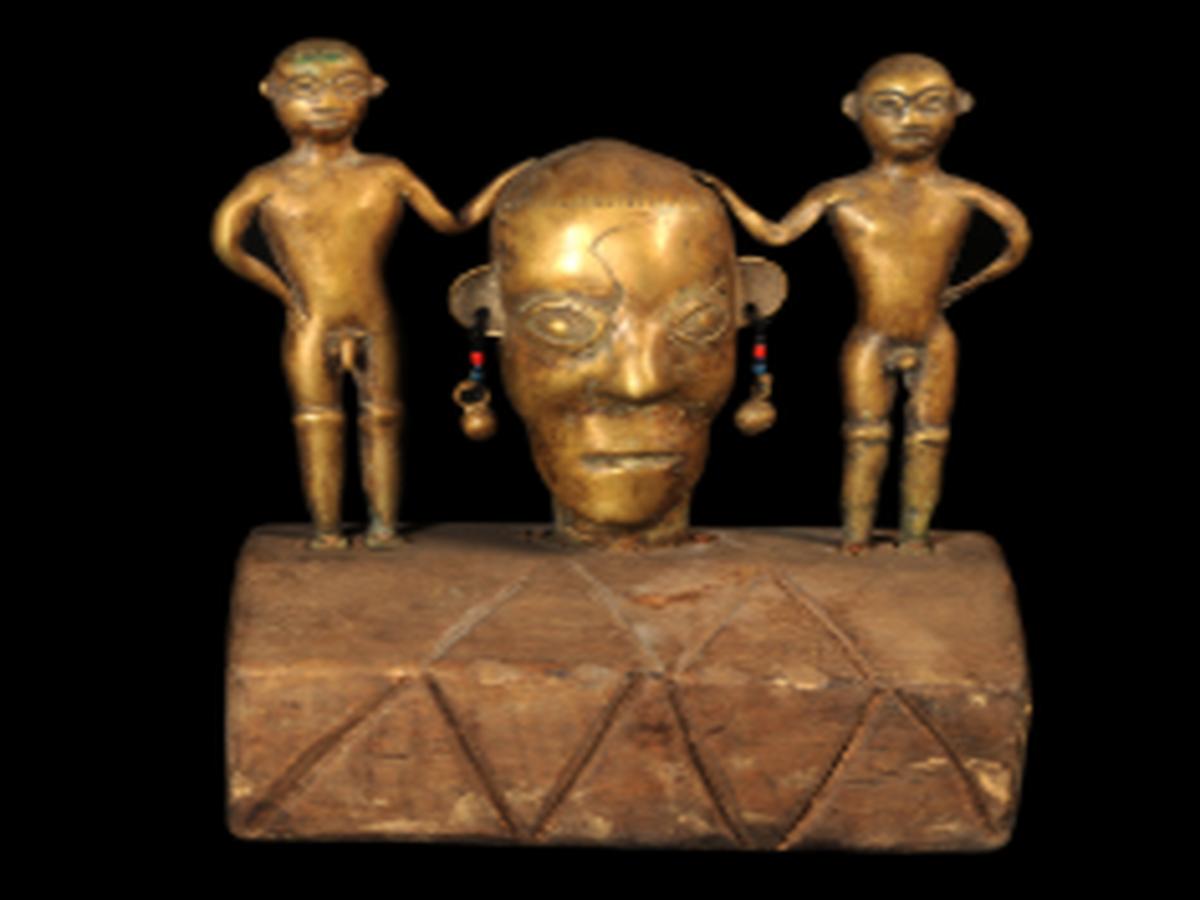State
Tribe Name
Art Type
short description
Human Effigy Konyak Naga Tribe are considered to be a powerful artistic cultural expression of the deep-rooted ancestral and ritualistic culture of the community. The Konyaks are located in the Mon district of Nagaland, India, and have long been renowned for mastery of the arts in metal, wood, and other ceremonial artifacts that portray their nature as warriors, fundamental beliefs, and their social structure. The work consists of two figures cast in metal and male in representation, standing upright. Between the two figures stands out a large sculpted human head in front, with earrings and distinguished adornments
Thumbnail

Filter Postion
Left
Filter Background
Off
Theme
Filter Header Image

content
Image

description
Human Effigy Konyak Naga Tribe are considered to be a powerful artistic cultural expression of the deep-rooted ancestral and ritualistic culture of the community. The Konyaks are located in the Mon district of Nagaland, India, and have long been renowned for mastery of the arts in metal, wood, and other ceremonial artifacts that portray their nature as warriors, fundamental beliefs, and their social structure. The work consists of two figures cast in metal and male in representation, standing upright. Between the two figures stands out a large sculpted human head in front, with earrings and distinguished adornments.
All three elements repose on a large wooden pedestal, harmonizing and lending cohesive meaning to the ensemble. The head of the adorned figure being placed between the two males insinuates meaning concerning protection, honor, and veneration of the ancestors. In the Konyak culture, such effigies were perhaps used as ritual objects, perhaps in ceremonies honoring ancestors, warriors, and socially important persons. The very large human head must symbolize a venerated person or ancestral spirit, while the earrings impart ceremonial significance to the head, perhaps as a symbol of prestige or identity. By giving physical support, this wooden pedestal also serves a symbolic function, connecting the figures to the earthly and spirit world.
All three elements repose on a large wooden pedestal, harmonizing and lending cohesive meaning to the ensemble. The head of the adorned figure being placed between the two males insinuates meaning concerning protection, honor, and veneration of the ancestors. In the Konyak culture, such effigies were perhaps used as ritual objects, perhaps in ceremonies honoring ancestors, warriors, and socially important persons. The very large human head must symbolize a venerated person or ancestral spirit, while the earrings impart ceremonial significance to the head, perhaps as a symbol of prestige or identity. By giving physical support, this wooden pedestal also serves a symbolic function, connecting the figures to the earthly and spirit world.
Image Mode
landscape
promoted
On
Verified
Off
